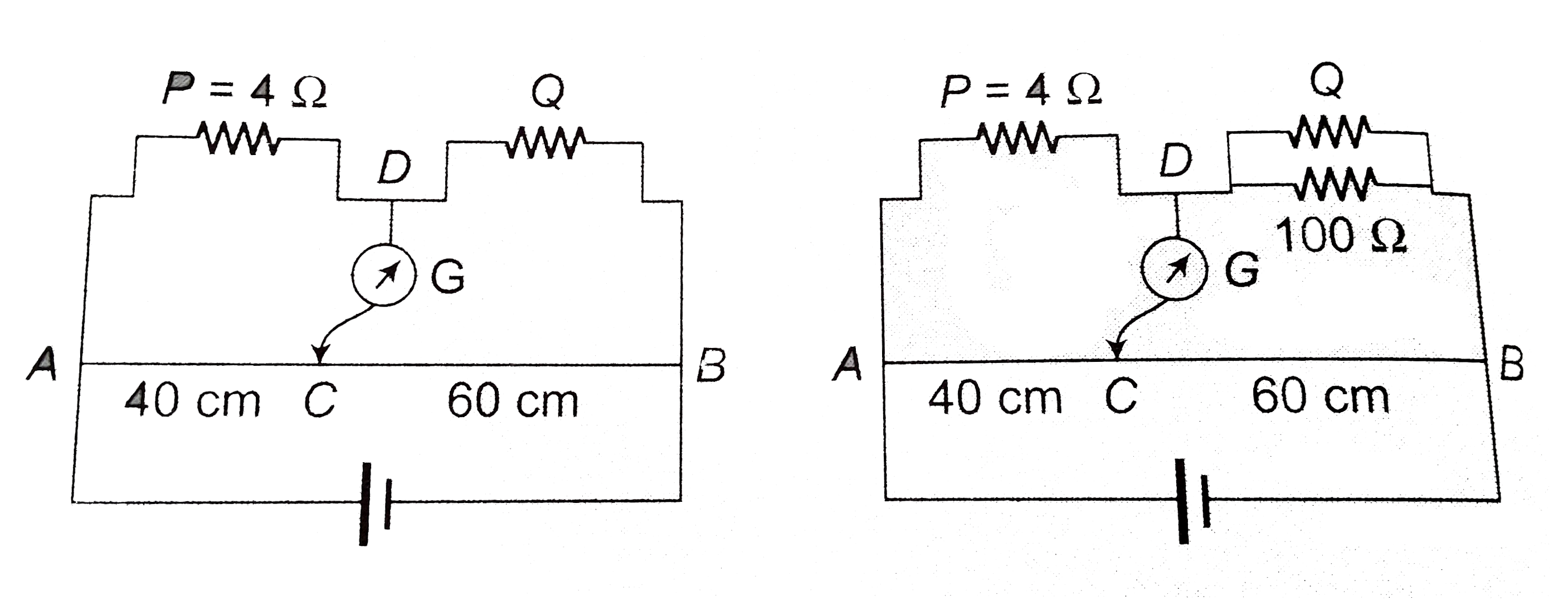A 6 m long wire made from an alloy, nichrome, is shaped into a coil and given for producing heat. It has a resistance of 240 ohms. Can we get more heat if the wire is cut into half of its original length and shaped into a coil? For getting energy, the two ends of the wire are connected to a source with a potential difference of 220 V.
The correct Answer is:More heat will be obtained after cutting the wire into half.
Let R be the resistance of the whose wire and V be the potential difference between the two ends.
Given that, R=240Ω,V=220V.
For coil of whole wire,
Power (P1)=V2R=2202240=220×220240
=220×1112=242012=201.67W
For coil of half length wire,
Power (P2)=V2(R/2)
...(∵As length is reduced to half, the resistance will also become half)
∴ P2=(220)2(240/2)=2202120=220×220120=220×116
=24206
Comparing P1andP2, we can say P2>P1.
Topper's Solved these Questions
- EFFECTS OF ELECTRIC CURRENT BOOK - TARGET PUBLICATIONCHAPTER - EFFECTS OF ELECTRIC CURRENT EXERCISE - Chapter Assesment
31 Videos
- DISASTER MANAGEMENTBOOK - TARGET PUBLICATIONCHAPTER - DISASTER MANAGEMENTEXERCISE - CHAPTER ASSESSMENT
2 Videos
- ENVIRONMENTAL MANAGEMENT BOOK - TARGET PUBLICATIONCHAPTER - ENVIRONMENTAL MANAGEMENT EXERCISE - APPLY OUR KNOWLEDGE
28 Videos
Similar Questions
You are given a length of uniform heating wire made of nickel-chromium-iron alloy called Nichrome, it has a resistance R of 72Ω. At what rate is energy dissipated in each of the following situations? (1) A potential difference of 120V is applied across the full length of the wire (2) The wire is cut in half, and a potential difference of 120V is applied across the length of each half.
View SolutionA uniform conducting wire of length 18a and resistance R is wound up as current carrying coil in the shape of a regular a hexagon of sides a. If the coil is connected to a voltage source V0, then the magnetic moment of coil is

View Solution
Knowledge Check
A 10m long potentiometer wire has a resistance of 20 ohm. It is connected in series with a battery of emf 3V and a resistance of 10Ω. The internal resistance of cell is negligible. If he length can be read accurately up 10 1mm, the potentiometer can read voltage.
 Aup to minimum of 0.2 mVBwith an accuracy of 0.2 mvCwith an accuracy of 0.1 mVDup to minimum of 2V
Aup to minimum of 0.2 mVBwith an accuracy of 0.2 mvCwith an accuracy of 0.1 mVDup to minimum of 2VA battery of 6 volts is connected ot the termainals of a three meter long wire of uniform thickness and resistance of the order of 100Ω. The difference of potential between two points separated by 50cm on the wire will
A2VB3VC1VD0.5V
Find the heat produced in joule if a current of 0.1 A is passed through a coil of resistance 50 Ω for two minutes. Keeping other conditions the same if the length of the wire is reduced to 14 th the original length ( by cutting the wire), what will be the heat produced ?
View SolutionAn accumulator of emf 2V and negligible internal resistance is connected across a uniform wire of length 10 m and resistance 30Ω The appropriate terminals of a cell of emf 1.5V and internal resistance 1Ω is connected to one end of the wire and the other terminal of the cell is connected through a sensitive galvanometer to a slider on the wire. What is the length of the wire that will be required to produce zero deflection of the galvanometer? How will the balancing length change?
(a) When a coil of resistance 5Ω is placed in series with the accumulator.
(b) The cell of 1.5V is shunted with 5Ω resistor?
View SolutionIf all the energy lost from joule heating stays in a wire , and the temperature increases as a result the resistivity also increase. The current will therefore change as a function of time of time, the joule heating will change and so forth. If the wire material has constant heat capacity , the rate of energy loss in wire will be proportional to rate of change of temperature . Assuming that potential stays constant set up a differential equation that describes the rate of change of temperature .If this equation is solved, how can the current he found as a function of time ?
(Given m is the mass of the wire , V is the potential difference across the wire, C is the specfic heat capacity of wire , α is the thermal coefficient of resistance, R0 is the resistance of wire at initial temperature T0).
View SolutionFind the heat produced in joule if a current of 0.1 A is passed through a coil of resistance 50 Ω for two minutes. Keeping other conditions the same if the length of the wire is reduced to 14 th the original length ( by cutting the wire), what will be the heat produced ?
View SolutionThe emf of a battery is 6 V and its internal resistance is 0.6Ω. A wire of resistance 2.4Ω is connected to the two ends of the battery, calculate (a) current in the circuit and (b) the potential difference between the two terminals of the battery in closed circuit.
View SolutionAs shown in the figure, a meter bridge consisting of two resistances P and Q together in parallel with a meter-long wire AB of uniform cross-section. C is a movable contact that can slide along the wire AB. The resistors P,Q and resistances of segments AC and CB of the wire constitude the four arms of bridge. the length AB=100cm,P=4Ω,Q is a coil of wire. With Q immersed in melting ice the null point is found to be at a distance of 40cm from A. When the coil Q is heated to 100∘C, a 100Ω resistor has to be connected in parallel with Q in order to keep the bridge balanced at teh same point. Calculate the temperature coefficient of resistance of the coil.
 .
.
View Solution